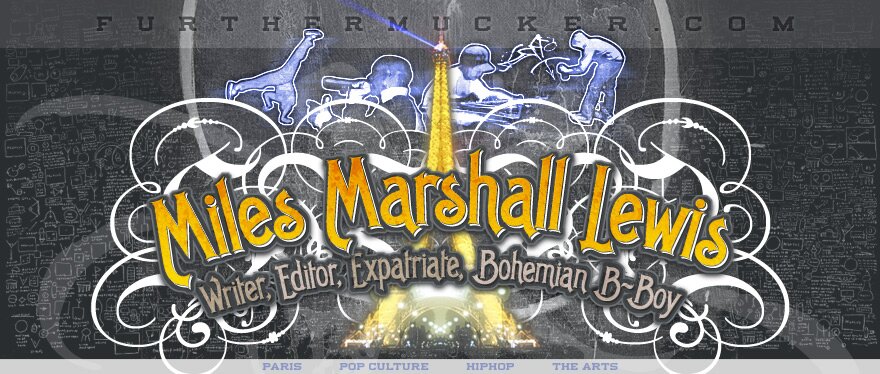Tuesday, April 22, 2008
Being a Black Rolling Stones Fan (part 2)
filed under: the beatles, the rolling stones In college I went about training myself to become a music journalist without realizing that’s what I was doing. I’d grown up in the 80s reading dad’s Rolling Stone magazines (and Black Beat, Right On!, Word Up, Spin, Billboard, etc.). Whenever Prince would tell a journalist that he loved Joni Mitchell’s The Hissing of Summer Lawns, I’d haul my 14-year-old ass to Crazy Eddie searching for whatever it was. Writers used so many Beatles/Rolling Stones/Bob Dylan comparisons that eventually I decided to give myself a strict education in these furthermuckers. I spent the summer of 1989 on a Beatles trip, and devoted my 19-year-old summer of 90 to the Stones.
In college I went about training myself to become a music journalist without realizing that’s what I was doing. I’d grown up in the 80s reading dad’s Rolling Stone magazines (and Black Beat, Right On!, Word Up, Spin, Billboard, etc.). Whenever Prince would tell a journalist that he loved Joni Mitchell’s The Hissing of Summer Lawns, I’d haul my 14-year-old ass to Crazy Eddie searching for whatever it was. Writers used so many Beatles/Rolling Stones/Bob Dylan comparisons that eventually I decided to give myself a strict education in these furthermuckers. I spent the summer of 1989 on a Beatles trip, and devoted my 19-year-old summer of 90 to the Stones.
The Beatles summer was a lot more interesting, but that’s a story for another time. My summer of Stones involved reading the biography Jagger by Carey Schofield, watching the Gimme Shelter documentary and discovering Exile on Main St. (recorded on an infamous vacation in the south of France), Hot Rocks 1964-1971, Some Girls (for “Miss You,” which I always liked) and Let It Bleed. I think Steel Wheels came out that year, and I went down early in the morning to the Times Square train station where the Stones would be announcing the album’s release to the world. It was maaad crowded and I broke out without seeing nary a grey hair on Mick, Keith, Ron or Charlie’s head.
I had (have) young parents, and so Beggars Banquet, Sticky Fingers and Let It Bleed were actually on vinyl at the crib growing up, but they never got any burn, not that I remember. Whatever Stones I knew was from the oldies station in the car. Despite my summertime 1990, I still haven’t listened completely to classics like Sticky Fingers or Beggars Banquet (though “Parachute Woman” is two minutes and 23 seconds of their finest moments); the albums are in my iPod from somebody, tracks get shuffled in sometimes.
Does “Brown Sugar” offend me? This a Black Rock Coalition question, like were John Lennon and Yoko Ono a little free with it recording “Woman Is the Nigger of the World.” I personally think that the Rolling Stones created something unique in trying their best to copy black blues styles. I gotta admit that I’ve heard Nirvana’s “In the Pines” more than the Leadbelly version it came from, and I’ve listened to Exile‘s “Ventilator Blues” more than any Muddy Waters or Howlin’ Wolf song. And “I Just Want to See His Face” is one of the greatest songs of all time to put on a repeat-ad-infinitum loop after finishing a fat blunt. It’s complicated. When you’re a race man, you sound like a race traitor saying “you gotta lay down some of that baggage to enjoy to overall art of shit sometimes,” but that doesn’t make it any less true.

 I wasn’t aware how much of a race-man I’ve been my whole life till I moved to France, where the blending of black and white is a lot less self-conscious. Case in point: I like the Rolling Stones – I’m not their biggest fan or anything, but fuck it, I can name at least 15 great songs by them – and yet a slew of racial touchstones went through my head last week watching Martin Scorsese’s
I wasn’t aware how much of a race-man I’ve been my whole life till I moved to France, where the blending of black and white is a lot less self-conscious. Case in point: I like the Rolling Stones – I’m not their biggest fan or anything, but fuck it, I can name at least 15 great songs by them – and yet a slew of racial touchstones went through my head last week watching Martin Scorsese’s  This is a random thought that I’ve never been able to work into any essay anywhere, but I always wished that Rufus (the 70s group that gave us the immortal Chaka Khan) marketed their trademark tongue-and-lips logo as savvily as the Rolling Stones did. I wish I could stroll Les Halles and find T-shirts adorned with Chaka Khan’s luscious lips as easily as I can find old Mick’s.
This is a random thought that I’ve never been able to work into any essay anywhere, but I always wished that Rufus (the 70s group that gave us the immortal Chaka Khan) marketed their trademark tongue-and-lips logo as savvily as the Rolling Stones did. I wish I could stroll Les Halles and find T-shirts adorned with Chaka Khan’s luscious lips as easily as I can find old Mick’s. Most people who care about such ephemera think that Andy Warhol was responsible for creating the omnipresent Rolling Stone logo, but that’s not true. Warhol did the supercool design of 1971’s
Most people who care about such ephemera think that Andy Warhol was responsible for creating the omnipresent Rolling Stone logo, but that’s not true. Warhol did the supercool design of 1971’s 
